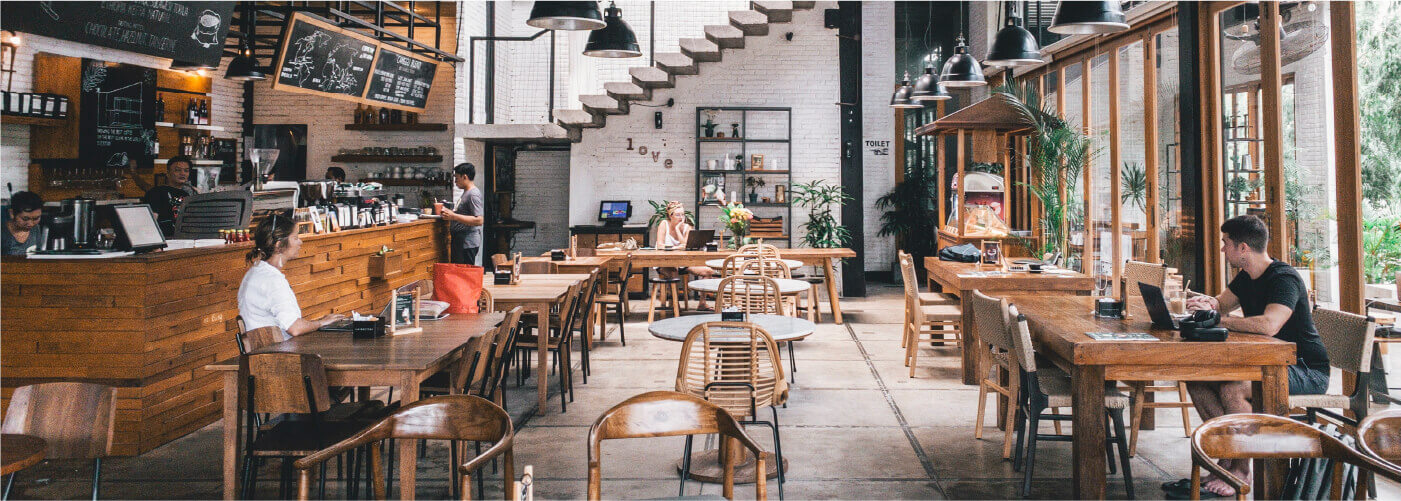8 tips to build a successful restaurant experience in times of crisis and beyond

Digital transformation is no longer a choice. That’s the key message from the experts who spoke at “How to build a successful restaurant experience,” an online event organized by LS Retail and Microsoft. The panel included industry experts from Microsoft and LS Retail as well as Leon DeWet, a CIO with decades of experiences in the F&B industry. The group discussed how restaurants can build competences and resilience to maintain customer loyalty and thrive, now and through the next crisis.
As Robbee Minicola, Senior Director, Global Partner Strategy, WW Retail & Consumer Goods at Microsoft, put it, “now more than ever, digital readiness is core to the success of this industry. Those who have already undergone their digital transformation are able to manage their business more effectively during challenging times versus those who have not.”
Here are 8 tips from the experts to help you approach this digital transformation, so that you can ride the next wave of change instead of being crushed by it.
1. Rethink every step of the journey
Yesterday, convenience and hospitality were important, but today, customer and employee safety is essential. Many restaurants have implemented quick fixes like covering payment devices in plastic for easy sanitization. However, it's important to consider if these measures hinder functionality. The rise of contactless payments, home delivery, drive-thru, and curbside services is not temporary. Restaurants must re-evaluate their entire process and implement long-term solutions that effectively prioritize safety.
Two examples that were mentioned of additions that will bring a benefit now and tomorrow:
- Menus that can be accessed via a QR code are useful now – paper menus are hard to sanitize – and will provide a value later on, as they enable restaurants to make quick menu changes without wasting time or printing costs.
- Software to manage tables and seating plans can help you easily redesign your floor plan, with safely distanced tables and clear tracking of who is seating where and when for contact tracing purposes. In the future, table management software can help you optimize seating space, track the status of each table (who is waiting to order, who has been served) and easily accommodate last-minute guests, all the while keeping your service flawless.
2. Focus on mobility
Mobility is crucial in digitization projects. By using mobile devices for your Point of Sale, you can efficiently manage the flow of guests and staff in your restaurant. Servers can take orders, process payments, and provide service directly at the tables, reducing the risk of contagion and improving convenience for guests.
If your POS has a two-way connection to the kitchen display systems, you benefit from streamlined communication and reduced contact risk. Orders are automatically sent from the POS to the kitchen display, eliminating unnecessary trips between the table, kitchen, and register. This not only saves time but also minimizes the risk of mistakes and speeds up table turnover. Many restaurants have eagerly adopted mobile POS devices like the Microsoft Surface tablet, which comes with restaurant-specific accessories.
3. Build your experiences on a strong technology platform
Customers demand consistent experiences, and these can only be achieved through a unified approach to technology.
Unified foodservice software solutions are increasingly replacing traditional fragmented IT setups. The benefits are well known:
- Managers geta 360-degree view of the organisation, with all business and customer data accessible in one place.
- Decision making is faster, as managers can get actionable reports, accounts and statistics exactly when they need them.
- Implementation and management costs are lower, as you don’t need to integrate separate systems and to maintain these integrations.
- You can transmit information quickly across the company, from the dishes on today’s menu to recipes, prices and nutritional content. So everyone can always perform at the top of their abilities.
Running your unified software in the cloud allows you to seize opportunities and quickly add innovative technology, transforming your business models faster. Many restaurants have found success by implementing systems for pickup, delivery, and curbside services. It is crucial to select software and hardware that work well together to ensure the success of your projects.
4. Track changes in customer behavior
Having access to reliable and up-to-date data is essential for restaurants to gain insights into customer behavior and foster loyalty. By leveraging this data, restaurants can effectively respond to changes, proactively address issues, and optimize their stock usage. Through predictive cost analysis, restaurants can also experiment with pricing strategies, menu offerings, and recipes to maximize benefits and establish resilience in their supply chain. Moreover, by having clear visibility of their available stock, restaurants can optimize its usage and strategically allocate inventory to locations with higher foot traffic. That's why a comprehensive restaurant software platform can really make a difference in supporting everyday operations and boost performance.
5. Change your metrics
The world has changed, and how you define success needs to change, too. DeWet believes that too many restaurants are stuck to old KPIs, and took table turns as an example. “How fast you can turn a table is only important if you have guests to fill that table. Don’t be blinded by what has historically been deemed key metrics within the organization. Understand what's happening in your business now before you decide which metrics to focus on,” he advised.
Change your metrics, and be ready to tweak them again and again. “You can’t use current behavior as an indicator of how customers will deal with you in the future,” Minicola pointed out.
6. Use intelligent tools to predict the future
According to DeWet, many restaurant businesses fail to fully utilize their analytical capabilities. While most organizations focus on reactive analytics using historical data, the true value lies in predictive analytics. By analyzing large amounts of data, predictive analytics can identify correlations and anticipate changes in trends, allowing businesses to prepare accordingly. DeWet also highlights the benefits of utilizing a business intelligence platform that combines internal and external data, providing a clearer understanding of how guest behavior may change and enabling small changes to drive significant benefits.
7. Don’t forget the human factor
Despite social distancing measures, guests still desire a personalized and warm dining experience. Employee empowerment is crucial in creating a hospitable atmosphere that cultivates loyalty.
“We all strive for loyalty – but it all starts with personal connections,” said Minicola. “If you want to connect with me, you have to talk to me. And that’s how you collect my data, get to know me better, and can then send me offers that drive me back through your doors.”
Carefully select your staff members, and take care of them. “When your staff are well cared for, your customers will be well cared for, too,” said Minicola.
8. Think long term
An effective digital transformation is built on long-term thinking. “Who would have though, just a year ago, that curbside delivery would be a thing for restaurants like it is for Walmart?” Minicola asked. DeWet advised restaurant CIOs that “We need to change our mindset, and realize that an investment in technology is no different from an investment in the latest air conditioning, or fry system. In both cases, you are investing in a key infrastructure that will enable to do business on an ongoing basis. You can’t wait until the demand is there before you make that investment. You need to be ready ahead of time,” he concluded.
Restaurants must be prepared for the future as consumer demand continues to shift. Even if a technology doesn't generate immediate returns, it's worth investing in if it allows them to adapt to changes. Digital transformation is become an imperative, but restaurants don’t have to do it all on their own. “No one expects you to understand it all. That’s why you have partners,” Minicola said. If you need help in getting your digital transformation going, contact us.


